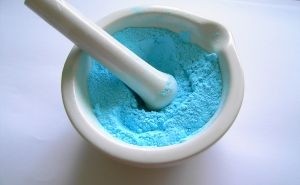news from Interphex
Lack of investment in production of low margin drugs behind shortages says expert

The current shortage of sterile sodium chloride solution would not have occurred thirty years ago - Christopher Smalley, Director of biosterile validation at Merck & Co., said at last week’s Interphex meeting in New York – but smaller margins have led to Big Pharma dropping such product lines to manufacturers whose facilities are more likely to fall under GMP violations.
In the 1970s, he said, firms such as Eli Lilly and Parke-Davis (now incorporated into Pfizer) supplied pharmacists with a catalogue of available products, whether or not each product line made a profit.
However, the situation has changed. “I have worked for companies and know companies that as soon as a product drops below a certain profit level they just drop the product,” he told a packed room, during a session discussing the problem of aging facilities.
“When Eli Lilly and Parke-Davis managed those catalogues they felt that was a service to the pharmacist to provide all those products in that broad catalogue, and you don’t get that from the Mercks or the J&Js anymore. As soon as it drops below a certain contribution to the bottom line, they line it off.”
Therefore the manufacturers still making these products run on very thin margins and are sometimes not robust, he continued.
“Some of those companies have ended up getting into regulatory problems because they haven’t made an adequate investment in their operations or their facilities. You drop one or two of those guys out because of a regulatory issue and you wind up with a shortage.”
Reluctance to open up NDAs
But how did the pharma industry get to this point, both Smalley and Maik Jornitz – COO of G-CON Manufacturing who also spoke on aging facility issues – were asked, as shortages are not a problem to other industries.
For older drugs, Smalley said, there is a reluctance to change the manufacturing process or modernize a facility as this would open up the original NDA (new drug application) and subject it to regulatory scrutiny.
“The regulatory hurdle to getting a new process approved, even though it may be more efficient and may save money, is just so high,” he told the room. “For me a facility that has a number of regulatory filings does not want to open those regulatory filings up.”
Jornitz agreed: “When you have a filing for a product, a lot of people don’t want to touch it with a pair of pliers because you could potentially open up a regulatory, processing and production can of worms.”
Speaking after the session, Smalley told in-Pharmatechnologist.com Wyeth’s estrogen drug Premarin, for example, had been manufactured in the same way for 64 years. The original NDA was only 16 pages long, and changing or modernizing the process would have opened it up and caused production problems.























